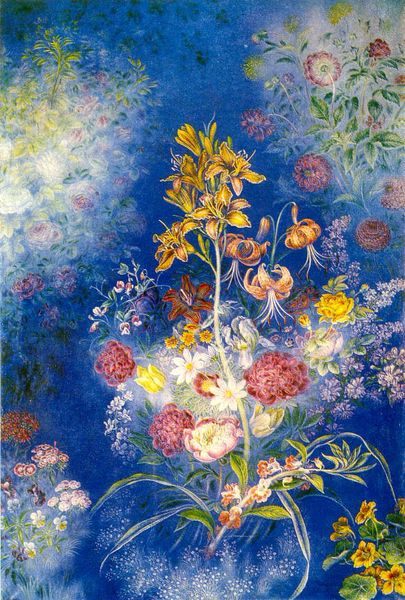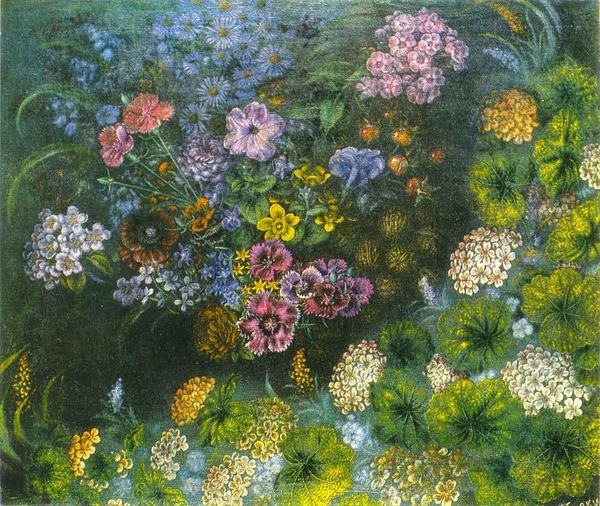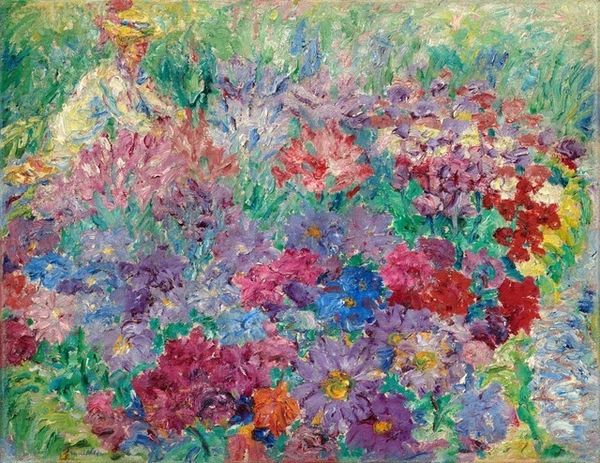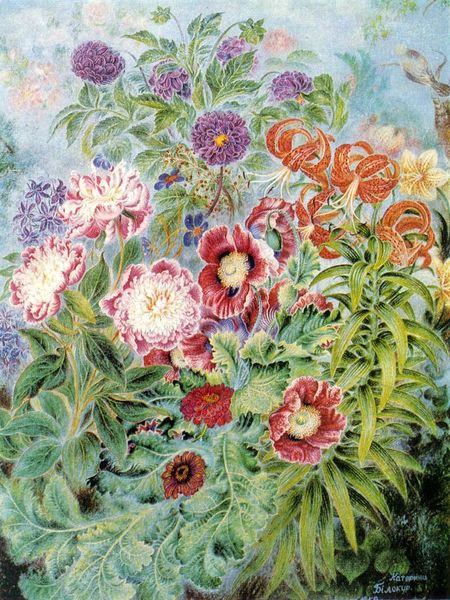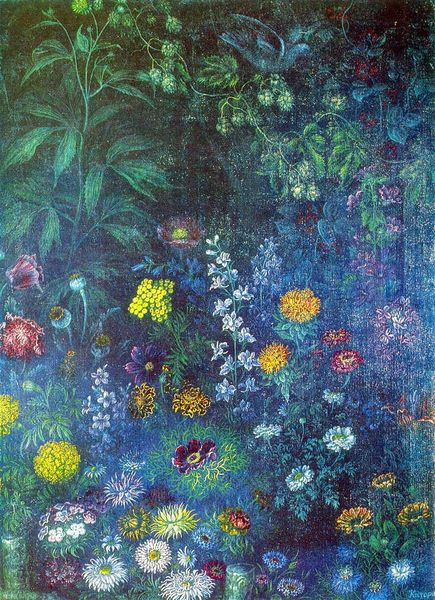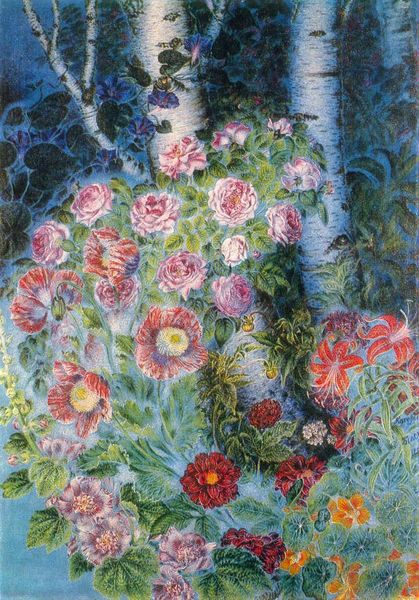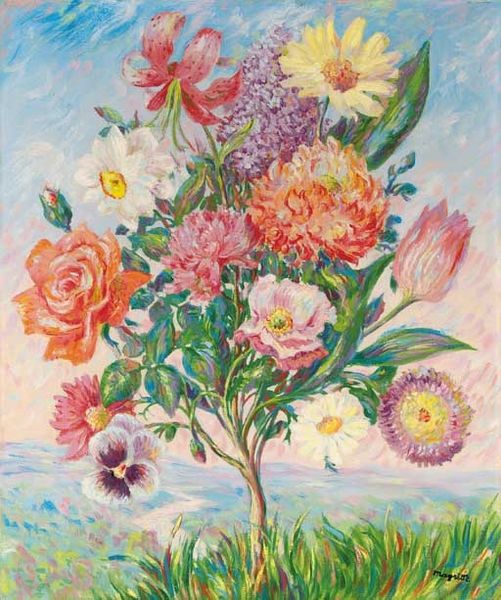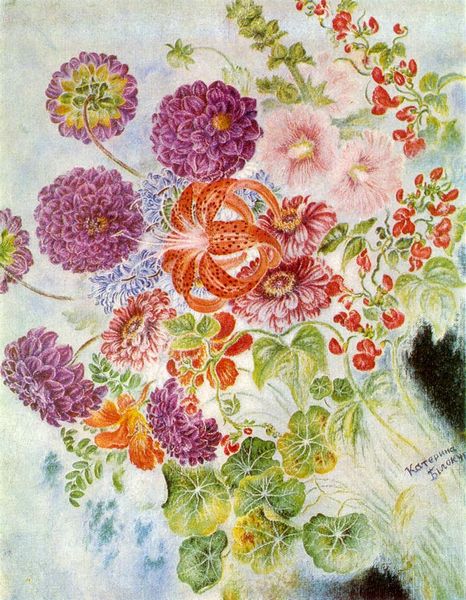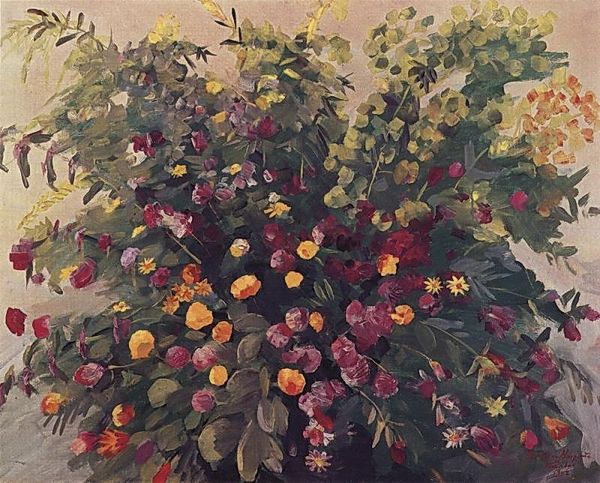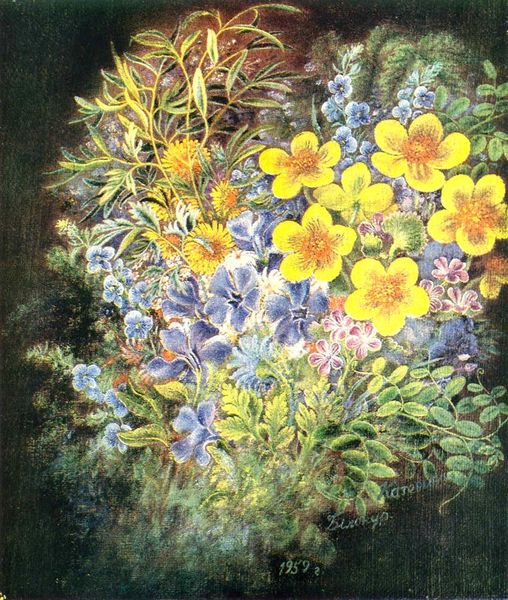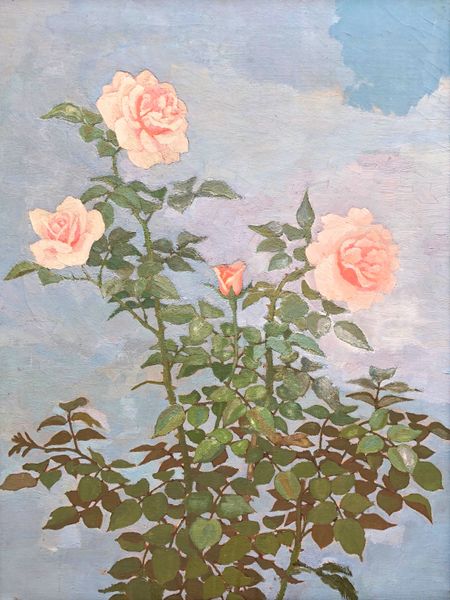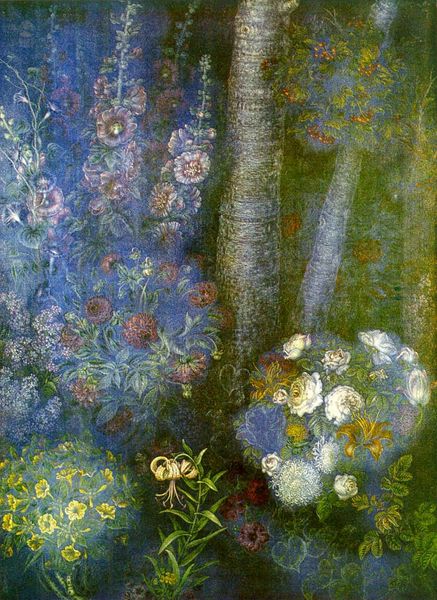
Copyright: Kateryna Bilokur,Fair Use
Editor: This is "Flowers by the Fence" created in 1935 by Kateryna Bilokur, using oil paint in a plein-air style. The impasto gives the flowers a vivid, almost tangible presence. What strikes me most is how meticulously she captures the textures, yet I wonder, what does it all mean? How do you interpret this piece? Curator: Let’s consider the social context. Bilokur was a self-taught peasant artist working in a Soviet Ukraine where the definition of “high art” was heavily politicized and usually very different from this intimate portrayal of the everyday. So we have to ask, what does it mean to create such a lavish celebration of simple, rural beauty under those conditions? Editor: I see your point about the societal limitations for artists during that time... and her being self-taught likely limited her access to some art circles. Do you think her art may have served as quiet act of resistance or celebration of suppressed Ukrainian culture? Curator: It's likely a far more complex situation. On one hand it could be an act of resistance as you say, reclaiming agency through artistic labor, depicting what mattered to her. On the other, the fact that the flowers themselves are meticulously painted points toward an interesting investment in very laborious, technically demanding, craft. She takes traditional floral subjects of craft such as embroidery, known to many female peasant artisans, and transforms them into something new. Editor: That’s an interesting perspective, considering traditional boundaries between “high art” and craft, labor, materiality, and consumption are challenged in such an unusual way here. So it becomes less about what the painting depicts, and more about *how* and *why* she made this choice given those external constraints? Curator: Precisely. Focusing on Bilokur's methods and material choices within that particular system reveals her ingenuity and a fascinating dialogue with the established art world, a redefinition of it perhaps. Editor: That's given me a lot to consider. Seeing how the means of production and the context surrounding it reframe the painting... I’ll be thinking about that for a while. Curator: As will I. It's vital to think about art as an active dialogue, always open to reinterpretation in light of new understandings of its materiality and the forces that shaped it.
Comments
No comments
Be the first to comment and join the conversation on the ultimate creative platform.
